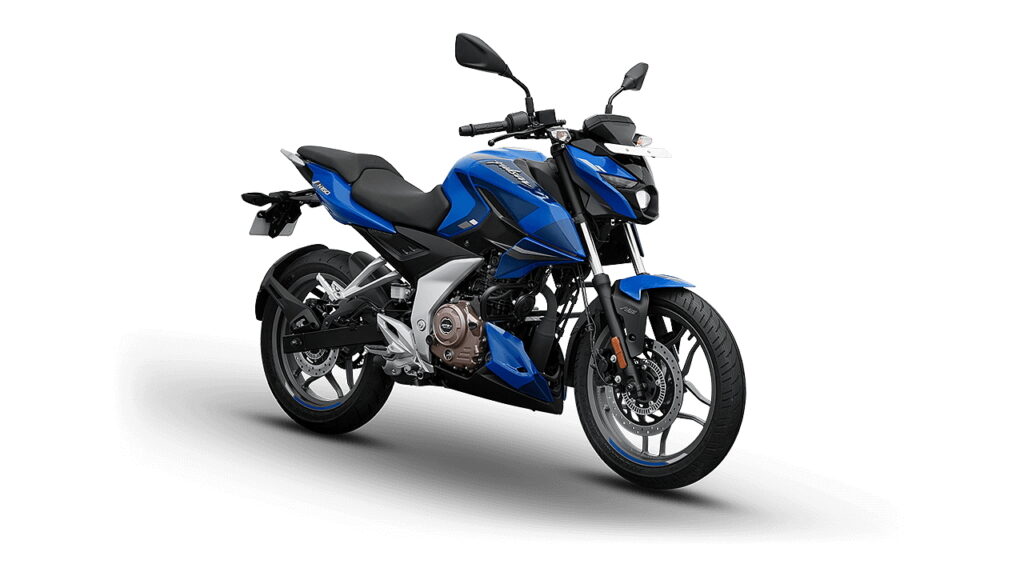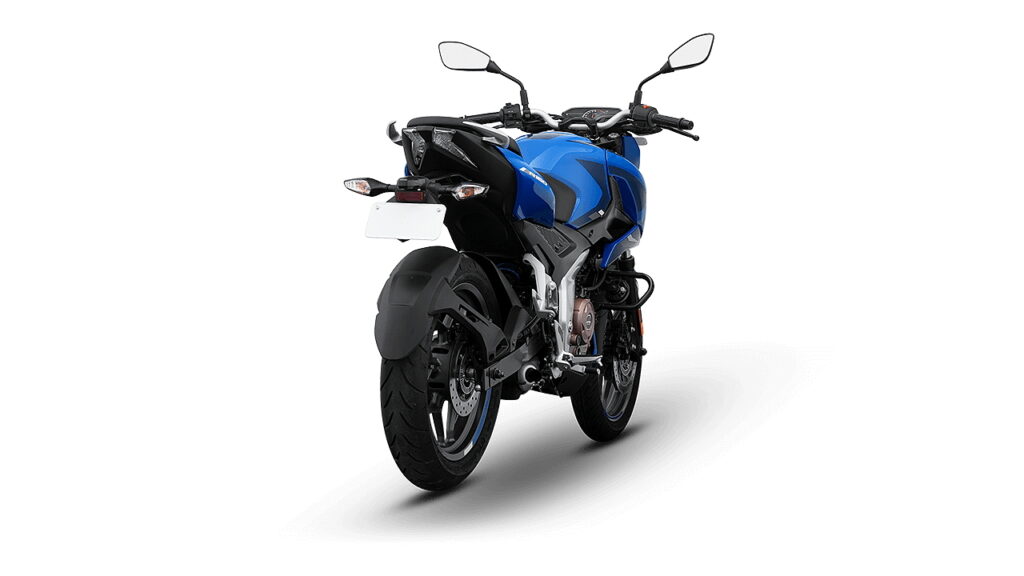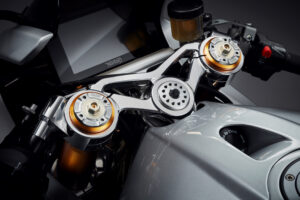The Bajaj Pulsars had been stalled for an update for many years, and with the launch of the N250 and the F250 last year, Bajaj has brought to us a whole new line of motorcycles bringing a mix of both performance and comfort, while looking modern and refreshing. Furthering this new line of motorcycles, Bajaj has now launched the N160, which is available in two versions- single-channel ABS and a segment-first dual-channel ABS variant. Designed and created on the same platform shared with its 250cc siblings, the bikes have a lot of similarities among them.

The front of the N160 greets you with signature naked wolf LED DRLs placed above a bi-function LED projector light and pentagonal side indicators. Move to the side and the muscular tank extensions with deep knee recesses and sharp shrouds envelop the sizeable 14-litre fuel tank that cleanly tapers to merge into the split seats. A neatly incorporated underbelly exhaust makes for a smooth and uncluttered flow to the rear of the bike that looks sleek with Bajaj’s signature split tail lights.

It also sports the same 17” alloy wheels as seen on the 250 twins, although with thinner tyres – a 100/80 section tyre up front and a 130/70 at the rear. The N160 gets a semi-digital instrument cluster as seen on the 250 twins, with an analogue tachometer, a gear position indicator, distance to empty readout, fuel economy and a range indicator.

Powering the N160 is a completely new, oil-cooled,165cc SOHC single-cylinder DTSI motor pushing out 16hp and 14.65Nm of torque, paired to a 5-speed gearbox. Although the bike makes 1 hp less than the NS, it peaks earlier in the rev range, thus, one shouldn’t have to rev it out as much as the NS for peak performance, thus making it easier to ride along in the city and yet with a punchy mid-range for those brief moments of adrenaline.
Built on the same tubular steel chassis as its 250cc siblings, it also carries the same frame, with 37mm telescopic forks and a monoshock in the rear. The single-channel variant, however, gets smaller 31mm forks up front. A low seat height of 795mm should make it approachable for everyone and a sleek seat design should make it easy to get your feet down. The seating posture looks to be committed, but the low-set footrests make for a comfortable and agile riding position.
The braking department is well managed with 300 mm front and 230 mm rear disc brakes with dual-channel ABS. The single-channel ABS model misses out on the bigger front disc and gets a smaller 280mm unit.

Prices for the single-channel ABS variant start at 1.23 lacs (ex-showroom, Delhi) and the dual-channel ABS model, available exclusively in the Brooklyn black paint scheme is priced at 1.27 lacs (ex-showroom, Delhi).
Although the N160 looks handsome, and modern and boasts a number of new features, at 152kg (single-channel ABS) and 154kg (dual-channel ABS), it’s the heaviest in the segment. It should be interesting to see how the bike fares when we get our hands on the bike.
Stay tuned for our road test review of the new Bajaj Pulsar N160.








